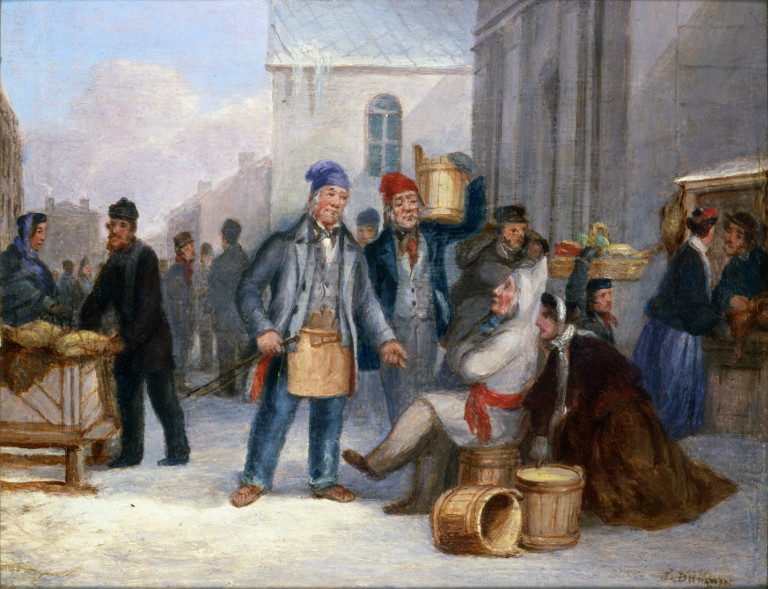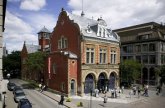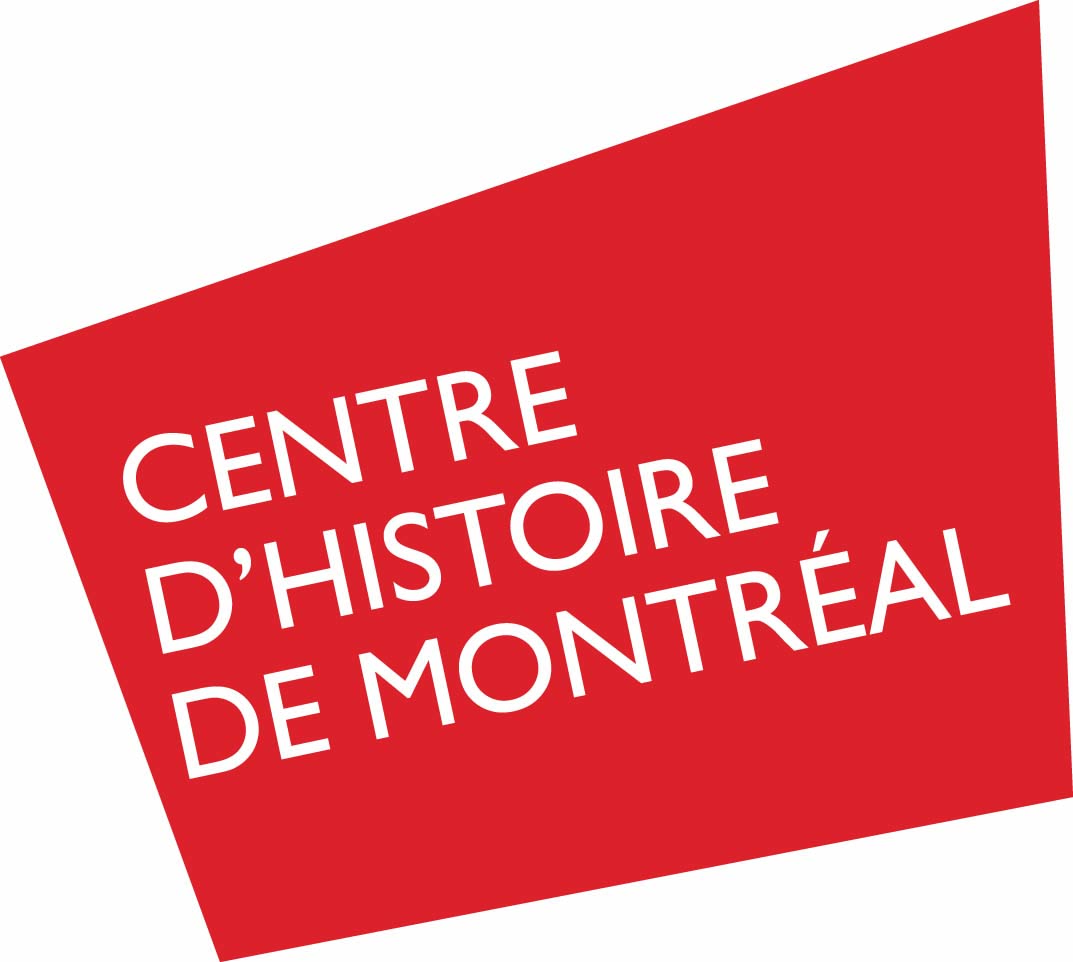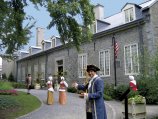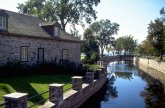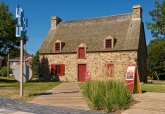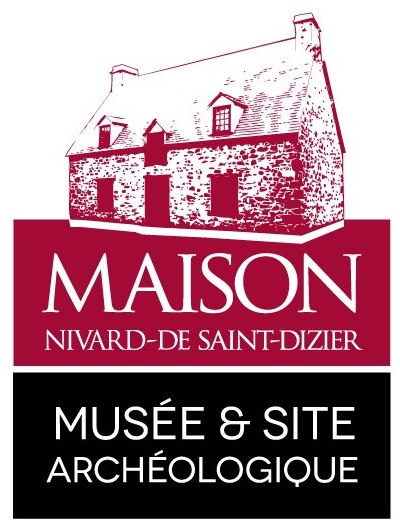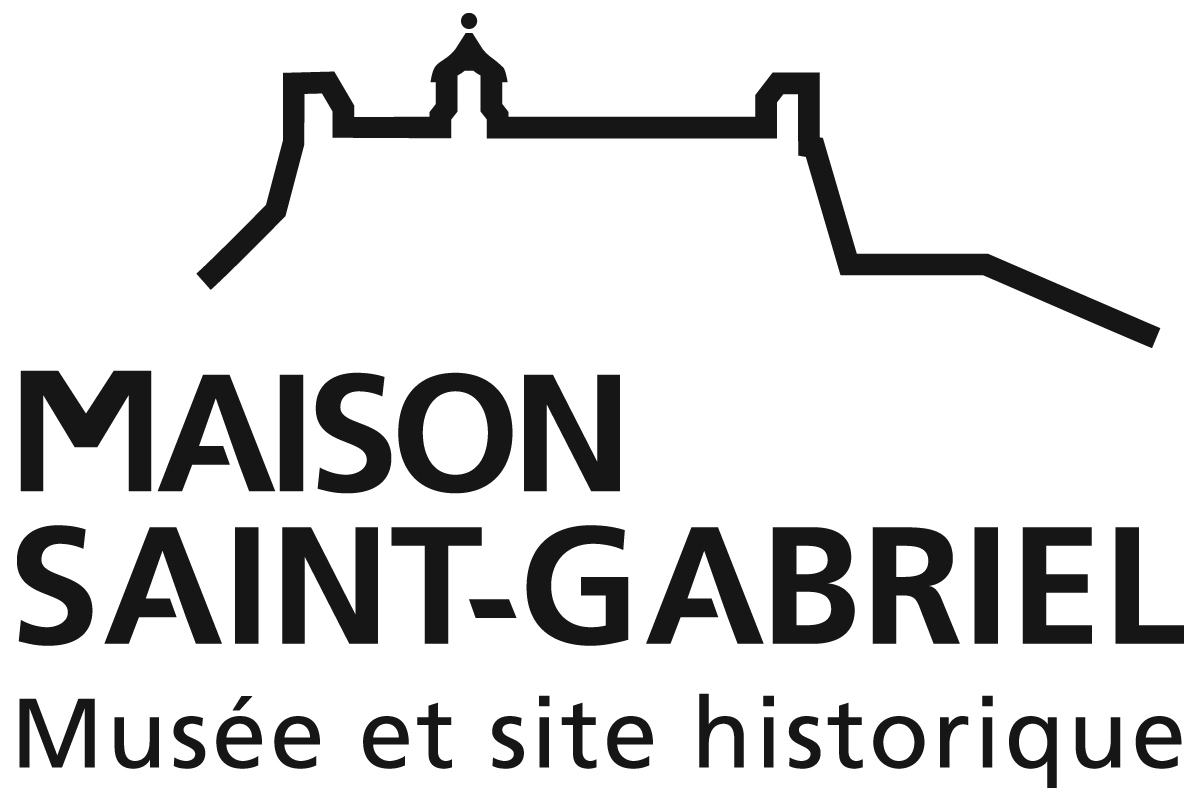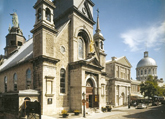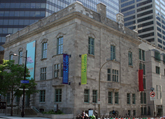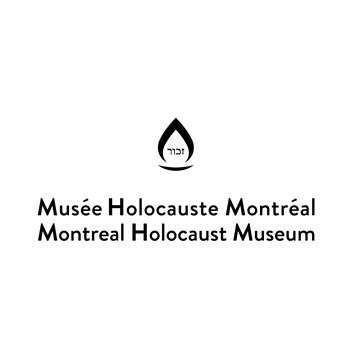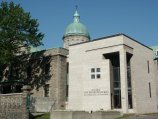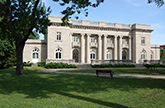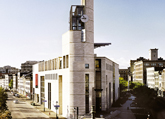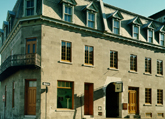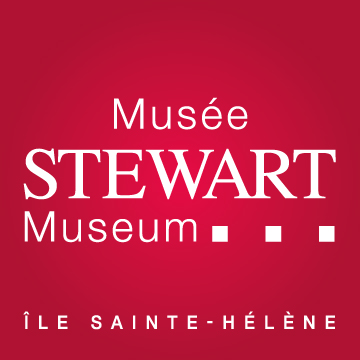Centre d’histoire de Montréal
Inaugurated in 1983, the Centre d’histoire de Montréal, situated in a unique heritage building, is the only historical museum in Montréal to present the city’s history from 1535 to the present under one roof.
Along with the permanent exhibition, our temporary shows reveal some lesser-known aspects of Montréal: history as it is lived day by day, reflecting the tensions and the meeting of diverse peoples and ideas.
The Centre d’histoire has created educational visits tailored to the needs, interests and development of sudents at different levels. A variety of means are used to arouse the students' interest and curiosity and offer them an enriching experience outside of their school context.
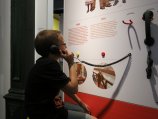
 Photos: Centre d'histoire de Montréal
Photos: Centre d'histoire de Montréal
Château Ramezay – Historic Site and Museum of Montréal
Montréal’s portal to its past, the Château Ramezay was the first building in Québec to be classified a historic monument. Built in the 18th century as a prestigious residence, the Château now invites you to relive more than 500 years of history, from the pre-contact Amerindian era to the 20th century.
A not-to-be-missed heritage landmark in Old Montréal, the Château Ramezay holds fascinating collections, displayed in numerous exhibits, intermingled with multimedia portrayals of historical figures recounting, in six languages, highlights of their lives at the Château.
Visit the Governor's Garden and experience delights typical of an urban garden in New France.
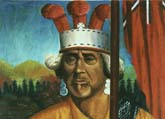
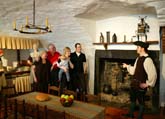 Photos: Château Ramezay - Historic Site and Museum of Montréal
Photos: Château Ramezay - Historic Site and Museum of Montréal
Écomusée du fier monde
Founded in 1980, the Écomusée du fier monde is a Montréal museum of industrial and working-class history. It presents the history and heritage of the Centre-Sud district in Montréal. A microcosm of Quebec’s industrial revolution, this neighbourhood witnessed the impact of industry on the working conditions and lifestyle of labourer families.
Since its creation, the Écomusée du fier monde has developed a museum practice based on outreach and informal education, as well as setting up participative projects. It is also involved in reflections on the development of its environment.

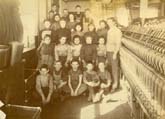 Photos: Écomusée du fier monde
Photos: Écomusée du fier monde
The Fur Trade at Lachine National Historic
The Fur Trade at Lachine National Historic Site, located on the shore of Lake Saint-Louis in Lachine, is a gateway to great explorations. A tour of the old fur warehouse built in 1803 gives visitors a chance to experience the adventures of Aboriginal trappers, coureurs des bois, French-Canadian pioneers and European merchants—and to relive the golden age of the fur trade. The fascinating stories of great voyagers of the past, such as Alexander Mackenzie and David Thompson, are sure to whet visitors’ appetite for adventure. It’s one of the rare places in Montréal where it is possible to actually touch the fur collection!
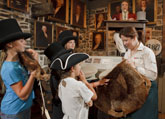
 Photos: Parks Canada / P. Charbonneau
Photos: Parks Canada / P. Charbonneau
Maison Nivard-De Saint-Dizier – Museum and Archaeological site
Located along the St. Lawrence River, Maison Nivard-De Saint-Dizier is one of the oldest building still standing today on the island of Montréal, in addition to being an outstanding example of rural architecture in the early days of the French regime. The foundations of the house, built in 1710, sit on the largest pre-historical archeological site ever discovered on the island of Montréal, revealing Amerindian occupation that dates back over 5,500 years ago.
In addition to its permanent exhibition, Maison Nivard-De Saint-Dizier offers a program of educational and cultural activities, providing everyone with an opportunity to enjoy a unique experience.
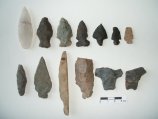
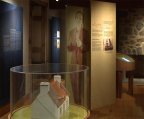 Photos: Collection – Ville de Montréal, arrondissement de Verdun | Exposition permanente – Productions Train d’enfer
Photos: Collection – Ville de Montréal, arrondissement de Verdun | Exposition permanente – Productions Train d’enfer
Maison Saint-Gabriel – Museum and Historic Site
A magnificent 300-year-old house and national historic site, Maison Saint-Gabriel presents various aspects of rural life in the 17th century and the history of the King's Wards. Visit its farmhouse garden, recreated in the style of New France (and its new theme garden: the Sharecroppers' garden). Discover its exhibits and an original and captivating program with craftspeople, musicians, performers and storytellers. Stroll through its glade and along the poetry path. Guided tours Tuesday through Sunday.

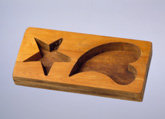 Photos: Maison Saint-Gabriel / Pierre Guzzo
Photos: Maison Saint-Gabriel / Pierre Guzzo
Marguerite-Bourgeoys Museum
Looking for a unique experience in Old Montréal? The Marguerite Bourgeoys Museum offers you the chance to discover the life and accomplishments of an outstanding woman and to explore exhibits that will surely capture your interest.
The tour will take you to the ruins of the 1675 chapel, passing through the 18th-century stone crypt, and up to the tower for a spectacular view of the river, Old Montréal and the downtown area.
Don’t miss a visit to this historic site once frequented by First Nations groups and later chosen as the site of the foundation of Montréal’s first pilgrimage chapel. A voyage of more than 2 400 years of history awaits you!
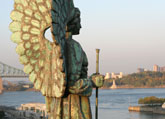
 Photos: Marguerite-Bourgeoys Museum
Photos: Marguerite-Bourgeoys Museum
McCord Museum
Located in the heart of Montréal, the McCord Museum is home to one of North America's finest historical collections, including the most comprehensive collection of clothing made or worn in Canada and the renowned Notman Photographic Archives.
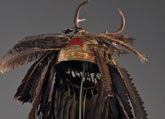
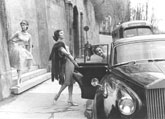 Photos: McCord Museum
Photos: McCord Museum
Montreal Holocaust Museum
The Montreal Holocaust Museum presents a story that had an impact on Quebec, Canada and the world. It helps visitors to understand the genocide of Jews by the Nazis during WWII and to consider the consequences associated with prejudice, racism and anti-Semitism.
Did you know that Montréal welcomed the third largest proportion of Holocaust survivors in the world? During your visit, learn from their testimonies and discover artifacts illustrating Jewish life before, during and after the Holocaust. Your tour will not only give you a sense of the tragedy, but also an opportunity to hear inspiring stories of resistance, survival and solidarity.
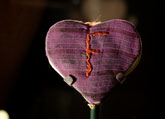
 Photos: MHMC / Vadim Daniel
Photos: MHMC / Vadim Daniel
Musée de Lachine
Located on the banks of the St. Lawrence River, 10 km from downtown Montréal, the Musée de Lachine comprises an archaeological site and collection, the oldest intact buildings on the Island of Montréal and a vast outdoor sculpture garden.
A magnificent example of 17th-century French architecture, the Maison LeBer LeMoyne is the jewel in the crown of the museum. Inside the house, more than 400 objects from the Museum’s collection illustrate the everyday life of its occupants since 1669. The major part of these items comes from archaeological excavations conducted on the site. The museum also offers exhibitions and engaging educational activities.
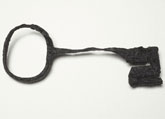
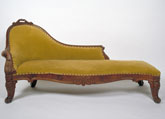 Photos: Richard-Max Tremblay
Photos: Richard-Max Tremblay
Musée des Hospitalières de l’Hôtel-Dieu de Montréal
Discover the human side of history at the Musée des Hospitalières de l’Hôtel-Dieu de Montréal, where you will see the evolution of Montréal from the perspective of healthcare for the city’s population. Despite the vagaries of colonization in a hostile environment, a population explosion, epidemics and industrialization, the town flourished and the Hospitallers of St. Joseph steadily provided care and adapted to the changes in society. These themes are presented to you through sculptures, paintings, furniture, medical instruments, religious artifacts and decorative arts from the nuns’ collection.
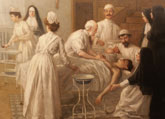
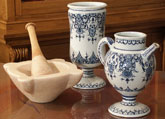 Photos: Musée des Hospitalières de l’Hôtel-Dieu de Montréal / Gilbert Langlois
Photos: Musée des Hospitalières de l’Hôtel-Dieu de Montréal / Gilbert Langlois
Musée Dufresne-Nincheri
The main historical heritage museum of Montreal’s east end, the Château Dufresne houses permanent and temporary exhibits, and offers educational and cultural programs relating to working people’s and middle-class history, to architecture, and to Montreal and Quebec heritage chiefly between 1850 and 1960.
Built at the beginning of the 20th Century, the Château Dufresne originally served as the residence of brothers Oscar and Marius Dufresne, two pillars of Montreal’s French bourgeoisie. The mansion has been listed as a historical monument, with its interiors painted by Italian-born artist Guido Nincheri whose stained-glass studio the museum plans as its next acquisition.
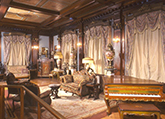
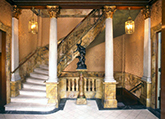
Pointe-à -Callière – Montréal Archeology and History Complex
Birthplace of Montréal and an authentic archaeological site, Pointe-à-Callière leads visitors through six centuries of history, from Indian days to the present. The Museum opened in 1992, the result of over 10 years of archaeological digs. It is an original and surprising museum, offering a fascinating experience combining treasures from the past with advanced technology. Don’t miss the multimedia show, Yours Truly, Montréal, and two permanent exhibitions, Where Montréal Was Born and Montréal Love Stories – The Cultural Connection. The Museum also presents two national or international temporary exhibitions every year on historical or archaeological themes.
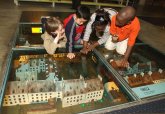
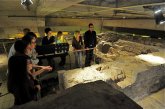 Photos: Pointe-à -Callière / Jacques Nadeau Marc-Antoine Zoueki
Photos: Pointe-à -Callière / Jacques Nadeau Marc-Antoine Zoueki
Sir-George-Étienne-Cartier National Historic Site
Set in the heart of Old Montreal, this National Historic Site introduces visitors to the life and work of Sir George-Étienne Cartier, one of the main architects of Confederation and the driving force behind many 19th-century reforms. Immerse yourself in the upper-middle-class surroundings of the elegant home where Cartier and his family lived from 1848 to 1872. Faithfully recreated Victorian décor illustrates the tastes and trends that guided the ruling class of the day.
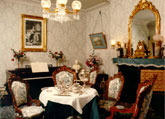
 Photos: Parks Canada / Normand Rajotte
Photos: Parks Canada / Normand Rajotte
Stewart Museum
Our collective past is a mosaic of the history of Aboriginal peoples, France, the United Kingdom, the United States, and society's major discoveries, among others. All have fed our imaginations and will forever be part of our individual and shared memory.
History and Memory offers an historical journey that will take visitors from the Aboriginal era to the present day. For the first time since its founding, the Stewart Museum is now able to showcase almost 500 artefacts, images, archival documents, and early maps.

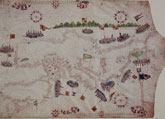 Photos: Stewart Museum
Photos: Stewart Museum

